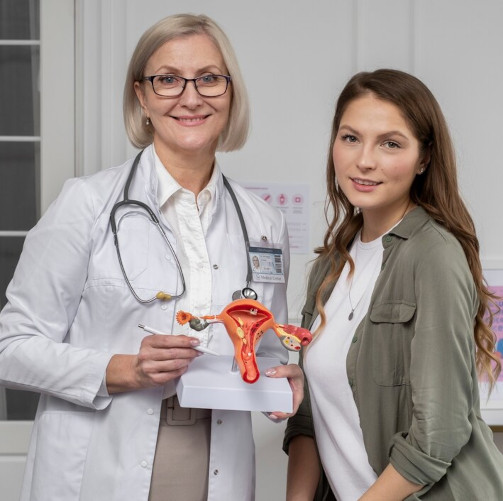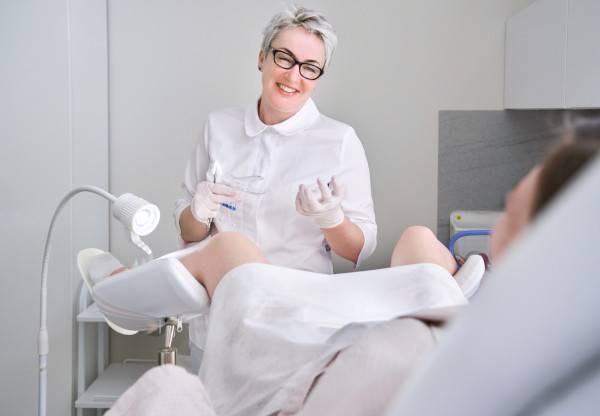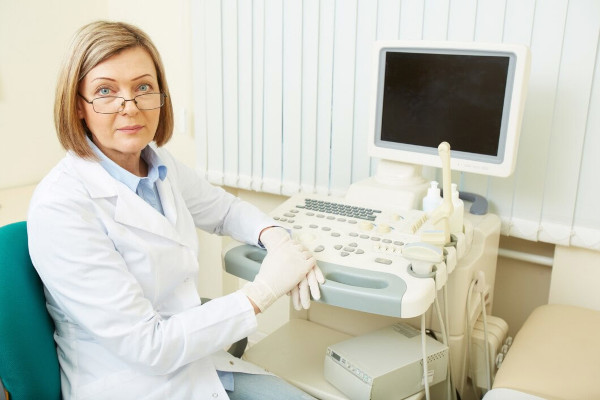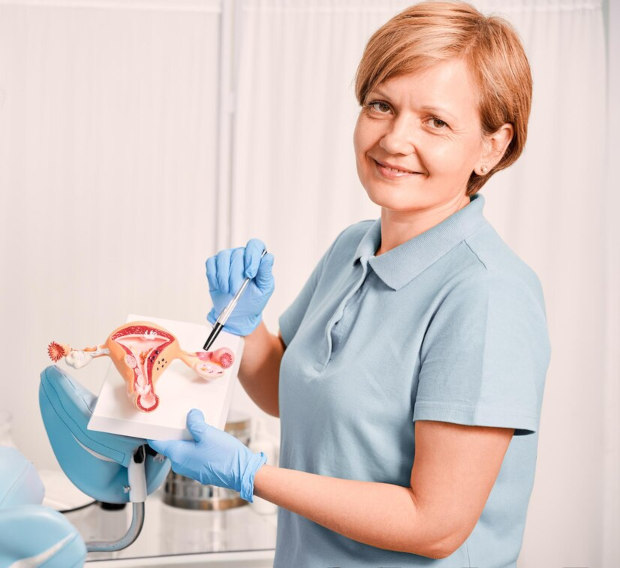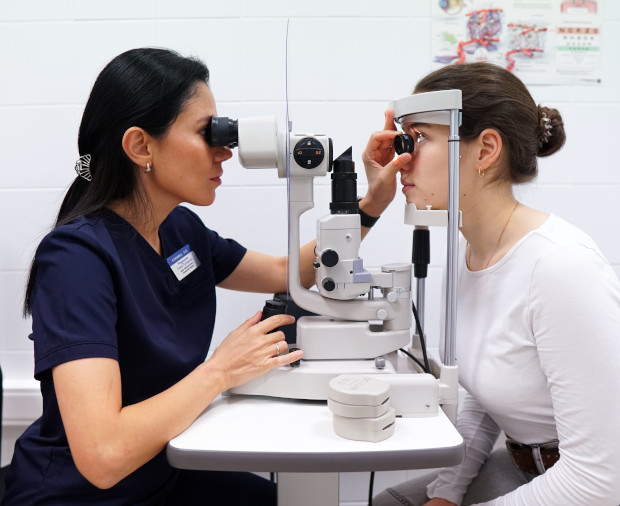Irregularities in the menstrual cycle
The menstrual cycle is an indicator of women's health, which shows how the endocrine and reproductive systems work. If the cycle is disrupted, this is a signal of possible problems. In order to notice them in time, it is important to record the dates of menstruation in the calendar and consult a doctor at the first failures.

specialists

equipment

treatment
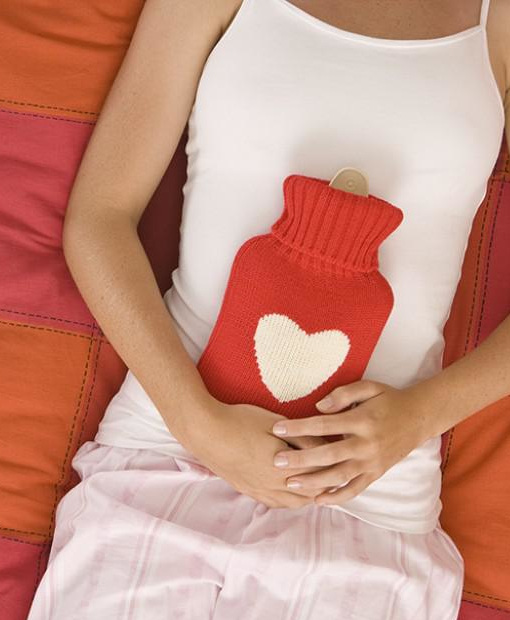
About the service
Mental cycle disorders are treated depending on the causes that caused them. In the presence of a small uterine fibroid, polyps, as well as remnants of placental tissue, they are removed during hysteroscopy. The result is stopping the bleeding. If the patient has a low hemoglobin level, antianemic therapy is prescribed.
In the presence of an inflammatory process, the following therapy is used:
- Antibacterial
- Anti-inflammatory
To combat dysfunctional uterine bleeding, as well as to treat adenomyosis, general thickening of the endometrium after the curettage procedure, hormonal drugs are prescribed. Their specific types are determined by the doctor, taking into account the individual characteristics of the body of a particular patient. If it is impossible to prescribe hormonal therapy, ablation of one type or another is performed, which is the process of burning the endometrium.
If it is necessary to treat the cervix to eliminate menstrual cycle disorders, modern medical methods are used, which are determined by the gynecologist based on the examination results. This can be:
- Cryodestruction
- Laser technology
- Radio wave surgery
In case of scanty, irregular menstruation, therapy is prescribed that allows restoring the normal course of "menstruation". If such treatment does not help, laparoscopic cauterization of the ovaries is performed, which makes it possible to restore normal menstrual cycle.
If there is a lack of menstruation in the presence of intrauterine pathologies, then hysteroscopy is performed using the method of separate curettage. Then oral contraceptives are prescribed, which promote the resumption of endometrial growth and normalization of the menstrual cycle.

Factors that can affect the frequency of menstruation include:
- Stress and emotional stress
- Diseases of the endocrine system, such as thyroid pathologies
- Infections
- Gynecological diseases, such as fibroids or polycystic ovaries
- Sharp weight fluctuations
- Lack of vitamins and minerals
- Excessive physical activity or, conversely, a sedentary lifestyle
- Taking certain medications, including hormonal contraceptives
- Chronic diseases, such as diabetes
- The influence of toxins and harmful substances
- Frequent flights or climate change
“Often, menstrual irregularities are associated with a lack of vitamins and microelements in the diet. Deficiency of iron, magnesium, vitamin D or group B can negatively affect hormonal balance. Monitor your diet to maintain normal functioning of the body," advises the doctor of the K+31 clinic.
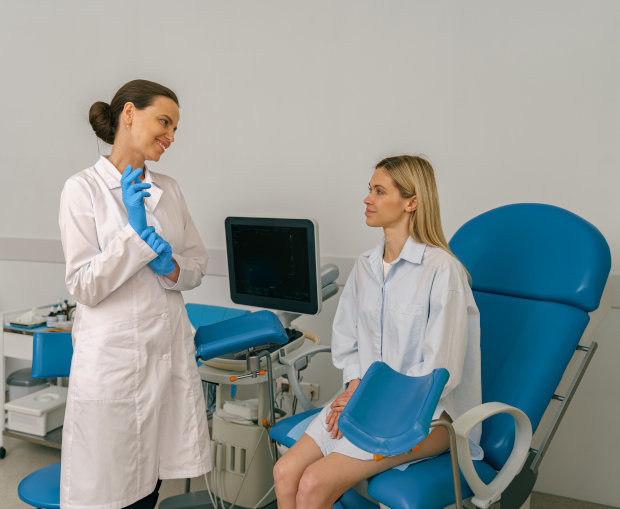
How to understand that there is a failure in the menstrual cycle, and what to pay attention to:
- Irregular menstruation. If menstruation occurs too often (once every three weeks or more often) or, conversely, less often than once every 35 days, this may be a sign of hormonal imbalance
- Unusual amount of discharge during menstruation. Too much bleeding, requiring a change of hygiene products every two hours, or, conversely, scanty menstruation - a reason to consult a doctor
- Cessation of menstruation. If menstruation does not occur for three months in a row
- Intermenstrual discharge. Bleeding between periods often indicates a hormonal imbalance or inflammation
Severe pain or a feeling of heaviness in the lower abdomen can also be symptoms of diseases such as fibroids or endometriosis. If even painkillers do not help, you should consult a doctor.
Types of cycle disorders
Let's look at the key types of menstrual irregularities.
Amenorrhea
This condition is characterized by the absence of menstruation for three months or longer. The primary form occurs in girls who have not started menstruating, which is usually associated with congenital features or genetics. Secondary amenorrhea develops in women who previously had a regular menstrual cycle. Causes often include hormonal imbalances, chronic stress, sudden weight loss, and endocrine diseases.
Dysmenorrhea
The disorder is accompanied by severe pain during menstruation, which can be combined with nausea, weakness, or dizziness. Primary dysmenorrhea is caused by hormonal imbalances and is more common in young women. The secondary form is associated with gynecological diseases such as endometriosis or uterine fibroids.
Oligomenorrhea and polymenorrhea
Oligomenorrhea is characterized by rare periods with intervals of more than 35 days. Polymenorrhea, on the contrary, is manifested by frequent menstrual cycles with an interval of less than 21 days. Both conditions often indicate hormonal imbalances or ovarian dysfunction.
Hypermenorrhea and hypomenorrhea
Hypermenorrhea is accompanied by profuse bleeding, which can lead to anemia. Hypomenorrhea is manifested by minimal discharge. Both conditions are often associated with changes in the structure of the endometrium or hormonal imbalances.
Metrorrhagia
This is bleeding not associated with the menstrual cycle, which can occur at any phase of it. Their causes may be associated with tumor processes or other serious pathologies. An urgent diagnosis is required.
Anovulatory cycles
In these cases, menstruation occurs without ovulation - the release of an egg. This condition is common in women with polycystic ovary syndrome (PCOS) and is one of the common causes of infertility.
Menstrual cycle disorders at different age periods
Let's consider the main age-related menstrual periods:
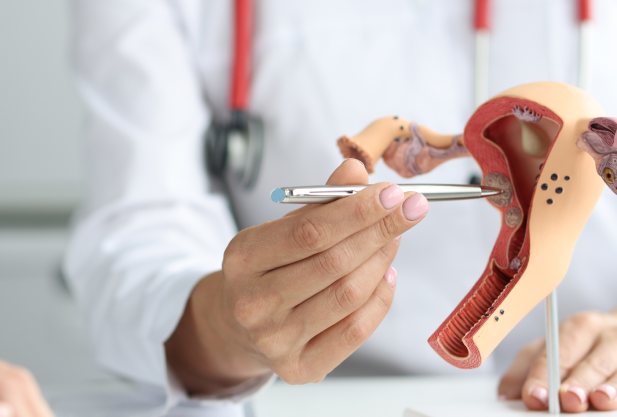
- Adolescence (12–18 years) At this age, the menstrual cycle is just forming, and irregularities are a physiological norm. The body of a teenage girl adapts to the changes, and the hypothalamic-pituitary system is unstable. Irregular menstruation, absence of menstruation (amenorrhea), or dysfunctional uterine bleeding are common.
- Reproductive period (18–45 years) In adult women, the menstrual cycle is usually stable, but it can be affected by external and internal factors. These include stress, hormonal imbalances, gynecological diseases such as endometriosis or uterine fibroids, as well as sudden weight changes or excessive physical activity. Painful periods, bleeding between cycles, and irregularities in their duration are especially common at this age. Endocrine disorders such as polycystic ovary syndrome can also manifest themselves during this period due to intense hormonal regulation.
- Premenopause (45–55 years) At this time, the ovarian function begins to decline, which is accompanied by changes in hormonal levels. Women notice irregular menstrual flow, changes in its duration and intensity. Symptoms such as hot flashes, mood swings, and sleep disturbances often occur. These changes are a natural part of the aging process.
- Postmenopause After menopause (absence of menstruation for more than a year), any bloody discharge is considered an abnormality. It may indicate endometrial hyperplasia, polyps, or even malignant tumors. In such cases, it is necessary to urgently consult a doctor.
How is menstrual irregularities treated?
Pain relief
For painful periods, doctors use a comprehensive approach to treatment. Nonsteroidal anti-inflammatory drugs, such as ibuprofen, help reduce the levels of substances that cause pain and cramps. If the cause is related to endometriosis, hormonal therapy is additionally prescribed to slow the progression of the disease. Physical therapy, such as magnetic therapy, ultrasound treatment or electrophoresis, helps to alleviate the condition. Temporary symptom control is possible with antispasmodics, such as drotaverine.
Bleeding control
To reduce blood loss, drugs that strengthen blood vessels, such as tranexamic acid, are prescribed. If blood loss is significant, iron-containing drugs are used to prevent anemia. In severe cases, drugs that temporarily suppress hormonal activity, such as gonadotropin-releasing hormone agonists, can be used. They reduce bleeding by temporarily reducing ovarian activity.
Hormonal therapy
To normalize hormonal balance, doctors often use drugs containing estrogens and progesterone. Treatment with oral contraceptives helps stabilize the cycle and reduce bleeding. In cases of endometrial hyperplasia, progestins are used, which prevent excessive growth of the uterine mucosa. If the condition is associated with endometriosis or large fibroids, treatment with drugs that suppress ovarian activity may be prescribed.
Surgery
If drug treatment is ineffective, surgery may be required. One of the modern methods is hysteroscopy. The procedure helps to confirm the diagnosis and remove polyps or endometrial hyperplasia. It is performed through the vagina using a special device - a hysteroscope, and its duration is about 30-60 minutes.
For women who do not plan to become pregnant, endometrial ablation is used. The method allows you to remove the inner layer of the uterus that causes bleeding. The procedure is performed using a laser, radio waves or a hot solution and takes about 20-40 minutes.
In complex cases, for example, with large fibroids or suspected tumors, myomectomy may be required. This is the removal of fibroid nodes, which is performed laparoscopically or through an open approach. The duration of the operation varies from 1 to 3 hours. In extreme cases, if other treatments do not help, a hysterectomy - a complete removal of the uterus - may be prescribed. This operation is performed through laparoscopic, vaginal or open access and lasts from 1.5 to 4 hours. This method of treatment is used only in the absence of alternatives.
The medical team of the K+31 clinic (Moscow) has extensive experience in the treatment of menstrual irregularities and will help you restore your health to return to a comfortable life. Call the gynecology department today and make an appointment!

This award is given to clinics with the highest ratings according to user ratings, a large number of requests from this site, and in the absence of critical violations.

This award is given to clinics with the highest ratings according to user ratings. It means that the place is known, loved, and definitely worth visiting.

The ProDoctors portal collected 500 thousand reviews, compiled a rating of doctors based on them and awarded the best. We are proud that our doctors are among those awarded.
Make an appointment at a convenient time on the nearest date
Price
Other services
Hormone therapy
Radio wave gynecology with the Surgitron deviceLaser therapy using the Photona device
Sling operations Ectopic pregnancy Delayed menstruation Removal of the uterus (hysterectomy) Thrush (vaginal candidiasis) Prolapse of the uterus and vagina Uterine polyp (endometrial polyp) Cervical dysplasia Adenomyosis Treatment of sexual infections Vaginitis (Colpitis) Erythroplakia of the cervix Endometritis Bacterial vaginosis Symphysitis (symphysiopathy) Erosion and ectopia of the cervix Vulvovaginitis Premenopause Uterine artery embolization for uterine fibroids Cervicitis Gynecologist consultation Dysmenorrhea (painful periods) Amenorrhea Removal of the ovaries (oophorectomy) Postmenopausal Sphinctermetry Treatment and intimate rejuvenation with the Fotona laser Adenomyosis (Endometriosis of the uterus) Vulvitis Vaginal surgeries Inflammation of the appendages (adnexitis, salpingo-oophoritis) Labiaplasty (labiaplasty) Bartholinitis Surgery to remove an ovarian cyst Prolapse (prolapse) of the uterus and vagina Hormone replacement therapy (HRT) First menstruation 7 days after embryo transfer Biochemical pregnancy IVF protein diet Day 5 after embryo transfer Follicles Bicornuate uterus and pregnancy Day 9 after embryo transfer 1 day after embryo transfer Age and Fertility 10 days after embryo transfer
